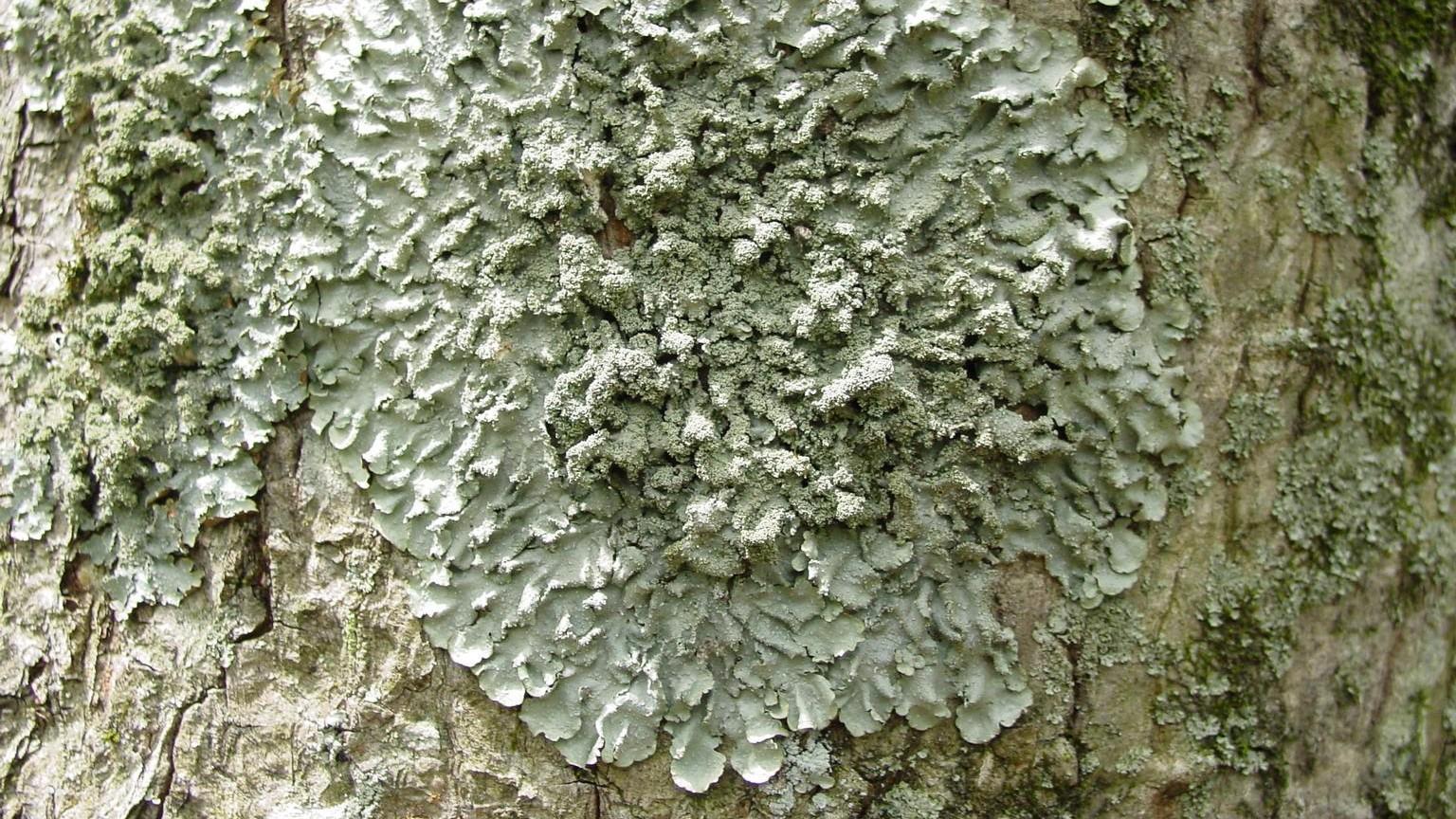Lichen identification and biology
There is a lot to be said for simply enjoying the natural beauty of lichen without trying to label them. However, lichen are easier to identify, at least to the family level, than you might think.
If you can distinguish soil, rock and tree bark, you are off to a running start. Different lichen species specialize in growing on these three types of substrate, so this is an important first clue to a lichen’s identity. Hunting for lichen in the winter is facilitated by the general lack of foliage, making bare soils, rock outcrops, and tree trunks more visible than usual. As a special bonus, storms litter the ground with lichen-encrusted branches, revealing treasures that would normally be above our reach. Even small branches can host several species, each with its own unique color and shape.
Body shape is another clue that is easily understood by beginners. Lichen occur as either:
- Powdery, crusty colors on surfaces, reminiscent of spray paint.
- Flat leafy shapes, usually rounded in outline.
- Three-dimensional shapes reminiscent of shrubs, beards, cups, etc.
Color is another easy taxonomic clue, and it is during gray, wet weather (typical of March) when lichen are most colorful. During dry spells, lichen shrivel up and their surfaces become opaque and faded-looking. This protects the internal, photosynthesizing algae from desiccation. When re-moistened, lichen expand and their surfaces become transparent again. Light and moisture can reach the internal algae, and photosynthesis resumes. The algal colors, which are often brighter than that of the fungal surface, shine through.
Lichen produce special structures for dispersing their progeny, and these result in interesting changes in shape, texture and color which are further clues to a lichen’s identity. The reproductive lives of lichen are unique, involving asexual methods, as well as sexual reproduction of the fungal symbiont. As with many things botanical, these structures have intimidating names like insidia, soredia, and apothecia. Fortunately it is not necessary to remember the names of the dispersal structures to use them successfully as taxonomic clues.
The life cycles of many native animals are intricately tied to lichen. Here are a few examples from animals native to Maryland:
Lichen also have many other stories to tell, intertwining their presence in almost all aspects of ecology and human endeavor. Here are but a few examples that illustrate their importance:
- Approximately 8% of terrestrial earth is covered by lichen.
- Lichen absorb nutrients from the air, and can be used as air quality indicators.
- Lichen contribute nitrogen and minerals to the ecosystems in which they occur.
- Historically, humans have used various species of lichen to make dyes and medicines.
- Lichen produce unique biochemicals to fend off herbivores, prevent freezing, and stop seeds from germinating in their soft, moist tissue. These chemicals hold promise for the development of new medicines and agricultural chemicals.

